
- Forums New posts Unanswered threads Register Top Posts Email
- What's new New posts New Posts (legacy) Latest activity New media
- Media New media New comments
- Boat Info Downloads Weekly Quiz Topic FAQ 10000boatnames.com
- Classifieds Sell Your Boat Used Gear for Sale
- Parts General Marine Parts Hunter Beneteau Catalina MacGregor Oday
- Help Terms of Use Monday Mail Subscribe Monday Mail Unsubscribe

Sculling Oars (yuloh)
- Thread starter Perry Solheim
- Start date Jul 4, 2016
- Tags sculling oar yuloh
- Forums for All Owners
- Ask All Sailors
Perry Solheim
Anyone build/install a sculling oar (yuloh, actually) on their full keel boat? Worth it? (I'm a woodworker, among my many hobbies and have a large well equipped shop, except for a lathe that I could use to build a wooden oar with...). I'm looking for tips on where to locate the oar lock (can't be close to center because of the tiller and rudder, but my IF is also very narrow so if I get too far to the starboard, I run the risk of banging the life line stanchions...) If you use one, how far do you tend to move the oar back and forth? How much space should I allow? Also, does the line that attaches to the deck need to be directly below the center of the oar, in line with the oar lock? Thanks for the help. I'm excited to be in the forum and actually have a boat to ask real questions about.
I don't have your answers, Perry, but I'm also interested in a yuloh as back-up propulsion for my little catboat. I too have the woodworking skills and shop to easily build one. Looking forward to having someone with some practical experience chime in.
Scott T-Bird
I think you'll find lots of experience and help with diesel mechanics but not so much with a sculling oar! But you never know ... give it some time!
Scott T-Bird said: I think you'll find lots of experience and help with diesel mechanics but not so much with a sculling oar! But you never know ... give it some time! Click to expand
Ukeluthier said: P Problem is, diesel mechanics generally aren't aboard when the auxiliary quits on a windless Chesapeake day. I'm pretty good with a wrench myself and keep my auxiliary well-maintained, but I'm a self-reliant "belt-and-suspenders" man who thinks a low-tech back-up makes sense for a smallish boat. I keep a canoe paddle in one of the cockpit lockers, but that doesn't cut it for any significant distance. I suspect there are a few more of us Luddites out there. Click to expand
My experience using a single sculling oar dates back to about 1973-75 when I taught Rowing Merit Badge at a BSA camp in northern Wis. However that was on a 16 foot rowboat. You will want the oar lock mounted off center but on a rowboat that was primarily for balance, on our boat probably enough to clear the rudder and tiller is fine. Your range of motion is probably limited to an arm length plus a little more if you lean into it. Not sure what you mean by the line that attaches to the deck? Our sculling oar lock was a U shape and the oar had a leather wrap about 8 inches with a leather collar that helped keep the oar from slipping down the oar lock. I have also seen some type of loop on the oar that fit over a post on the stern rather than using an oar lock. I did a quick google search (images) and saw a variety of ways to hold the oar in place. One pix of a ~25 foot sailboat looked like the captain was using a small telephone pole. There is also some YouTube videos of folks facing aft and working the heck out of the oar with both hands. The proper position is feet planted firmly on the deck, facing the side with the forward foot pointing somewhat in the direction of travel. Your aft hand working the oar and the forward hand holding your favorite adult beverage. Don’t forget to send pictures of the oar and a video of you gliding effortlessly through an anchorage.
brazenarticle
check out this article for some info on making and using a yuloh http://triloboats.blogspot.com/2012/04/windless-running-on-grits.html
brazenarticle said: check out this article for some info on making and using a yuloh http://triloboats.blogspot.com/2012/04/windless-running-on-grits.html Click to expand
- This site uses cookies to help personalise content, tailor your experience and to keep you logged in if you register. By continuing to use this site, you are consenting to our use of cookies. Accept Learn more…
For my little trimaran I use a very clever sculling method, invented by Atsushi Doi. You can see all his information by googling/youtubing AD sculling.
This year I participated in the Dorestad Raid, a sail and oar event in the Netherlands. I noticed I could keep up with most of the rowers, and that the other participants were surprised how well the AD oar could drive my boat (also backwards – very practical for docking).
I already made several versions of the oar, and I think now I have found a handy method for making such an oar.
The “real” version is beatifully carved from wood, with a curved handle (this bend produces automatic rotation of the blade).
My version is made from an old windsurf mast, with a blade made of a sheet of 2mm HDPE bent around the mast and a “cranck handle” on top instead of the bent loom.
This produces a strong, light, easy to make, cheap and maintainance free oar which seems to work good.
I hope the attached pictures speak for themselves, especially if you combine them with the original information/video's from Doi.
A few notes :
- The measurements shown are from my oar, and are all guestimated. They can be used as starting point.
- Plastic sheet was difficult to find (and expensive!) untill I found the right supplier. HDPE 2mm thick is good, use the black version for UV resistance
- I plastic welded the trailing edge (you need welding rod and a special piece for your heat gun). I folded the sheet, clamped the ends flat together with the underlying sheet sticking out a few mm, welded and used a planer to smooth the edge. HDPE is easy to plane.
- If you cannot weld you can probably sew the trailing edge together with a lot of small holes and strong thin wire (like kite line)
- Another option might be to use ABS plastic, there was an article in Duckworksmagzine about welding ABS . Or use something else that's bendable in a fair curve.
- My oarlock uses a PVC pipe slit lenghtwise, and a rope to prevent the oar sliding down too much. This is smooth without noticable friction.
- My cranck handle is a plastic cleat tied with bycicle inner tire, but you can use all kinds of handles. A bit more elagant wouldn't hurt ;-)
- The “strong rope” is the secret why this oar works so good. It takes the forward force of the oar, so you only have to work the oar back and forth sideways. The rest goes kind of automaticaly.
- Normally, you would have the spar (mast) at about one third of the depth of the chord of the foil. For this oar it should be more forward, or else the oar is overbalanced and starts to behave unpredictable.
Greetings from Amsterdam, and if you experiment with the oar Atsushi Doi is interested to hear what you have found out.
Product Reviews
The Scullmatix
Sculling's simple solution
From Issue December 2015
S ometimes, when you want to slide quietly from one fishing spot to the next, work up a narrow guzzle, or maneuver through a tight mooring field, it’s nice to be able to put a single oar over the stern to move the boat by sculling. The technique also comes in handy when you want to move your dinghy without getting your seat wet from the morning dew or simply do some salty stylin’ in front of a crowd of dock dwellers.
Learning how to scull takes some practice, but with the Scullmatix, a device that automatically produces the right angling of the blade, you can get your boat moving straightaway and without instruction. The Scullmatix provides benefits even for skilled scullers: It doesn’t strain your wrist, it allows you to stand in the best spot to trim the boat, and it converts one of your boat’s oars into a long, take-apart sculling oar.
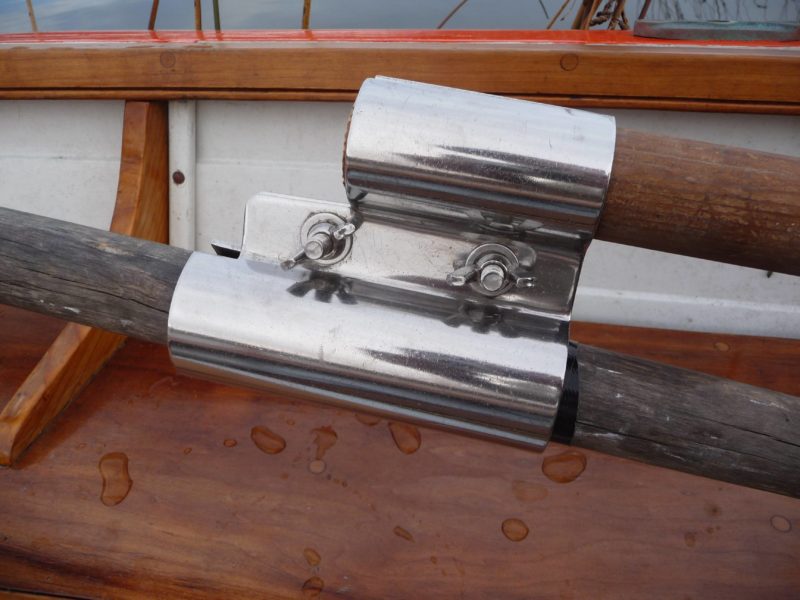
The Scullmatix is made of 1/8″ stainless steel plate and secured withe a pair of stainless 5/16″ bolts and wingnuts. Resting in the boat here, it’s shown upside down.
To use the Scullmatix, clamp an oar in one side with its blade perpendicular to the device and a handle in the other. It’s sized to fit an oar with a diameter of 1¾″ and a handle with a diameter of 1½″ and a length of around 40″. The handle, situated below the oar, automatically twists the blade; you simply pull and push the handle back and forth.
I’ve been sculling for years, so I was curious to see how well the device would work and tried it on several boats. My narrow-bottomed Swampscott dory, TIPSY, was not ideal. A 7½′ oar I had kicking around was too short, even with a 48″ handle; an 8-footer, one of the dory’s regular oars, worked a little better, but I still had to stand too close to the stern. When I clamped the Scullmatix onto my 10′ sculling oar, I could sit on the after thwart; I had a good time sculling for a good half mile at 1.5 to 2 knots. The 10-footer has a 4′ blade that induces a slow and sustainable rhythm; the smaller blades meant for rowing wanted a higher “wag” rate.
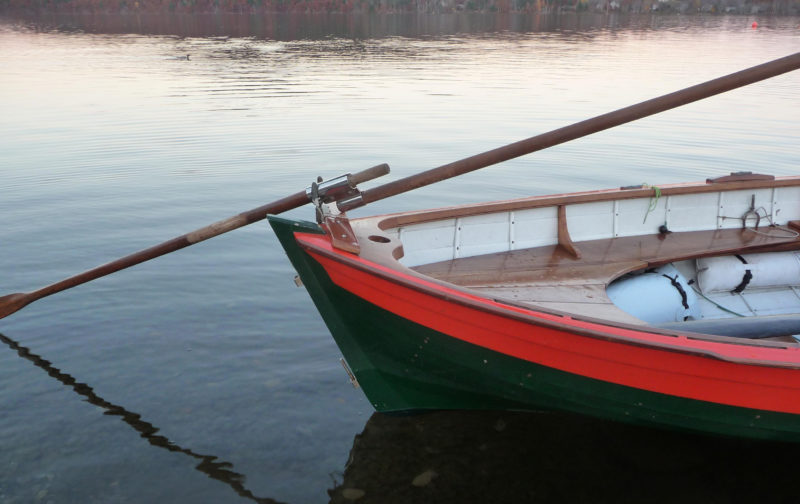
The author’s double ender has a short outrigger for an oarlock for sculling. It needed to be slightly elevated for the Scullmatix to keep the handle from making contact with the outrigger.
With RAN TAN, my double-ended 17′ Tony Dias–designed Harrier, I have an outrigger for sculling. With the 7½′ oar in the Scullmatix, it didn’t feel like I had enough blade in the water. The 8-footer made a difference by immersing more blade area. But what was really nice was using my 10′ sculling oar. I could put my body weight into the stroke in a nice rhythm. The boat is a little light and narrow, and it rolled when sculled hard, so the big oar would have been better with a heavier or beamier boat.
I also tried sculling an 18′ Lund outboard skiff on a windy day, using an improvised oarlock socket on a bit of wood clamped to the transom. With my 10-footer in the Scullmatix I was able, much to my surprise, to make good progress into the wind. With a wide, steady platform offered by the wide stern, there was no problem with boat trim or rocking.
The Scullmatix is designed for use with an oarlock rather than a transom notch. The flange in the middle of the device is meant to bear upon the metal lock; it will chew up wood around a notch. The oarlock socket should be oriented athwartships, and whatever the oarlock is mounted on should be relatively narrow so that neither the oar nor the Scullmatix makes contact with it.
The Scullmatix is nicely made of heavy-gauge stainless steel, and the clamping surface is long and smooth enough so that even a soft spruce oar isn’t damaged by it. The unit has wing nuts to tighten it, and securing it requires pliers or a wrench as recommended in the instructions.
The action is indeed automatic. You won’t need to grip the handle firmly to maintain pitch, or to reverse your angle on every stroke. You can push it back and forth and grip the handle only during the pull stroke; your hand can be loose, and even open, as you push. This definitely helps prevent cramping and other wrist and forearm problems. I had no trouble sculling RAN TAN a couple of miles at close to 2 knots in smooth water with little wind.
The biggest challenge is making sharp turns. With a regular sculling oar you flatten your pitch on one stroke and use plenty on the other to turn sharply. With the Scullmatix it seems almost impossible to move the oar with no pitch. Instead, I would alternate a power stroke and almost a coasting stroke to turn. With more practice I’d expect to improve.
Ben Fuller , curator of the Penobscot Marine Museum in Searsport, Maine, has been messing about in small boats for a very long time. He is owned by a dozen or more boats ranging from an International Canoe to a faering.
The Scullmatix is available from Duckworks Boatbuilders Supply for $37.50.
Is there a product that might be useful for boatbuilding, cruising or shore-side camping that you’d like us to review? Please email your suggestions.
Share this article
Join The Conversation
We welcome your comments about this article. If you’d like to include a photo or a video with your comment, please email the file or link.
Stay On Course
More From This Issue
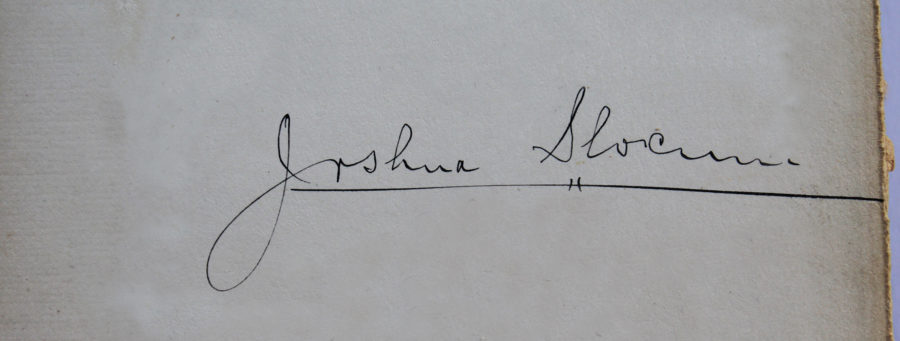
From The Editor
Joshua Slocum
I trust Joshua Slocum’s Sailing Alone Around the World needs no introduction here. I have three copies of it: the paperback volume I read in seventh grade, my father’s 1950 hardback, and...

Boat Profile
Calendar Islands Yawl
Jim Levang’s Calendar Islands Yawl is a real beauty. Maine designer Clint Chase acknowledges the influence of designers he admires, especially in his early work—Paul Gartside, Iain Oughtred, François Vivier,…
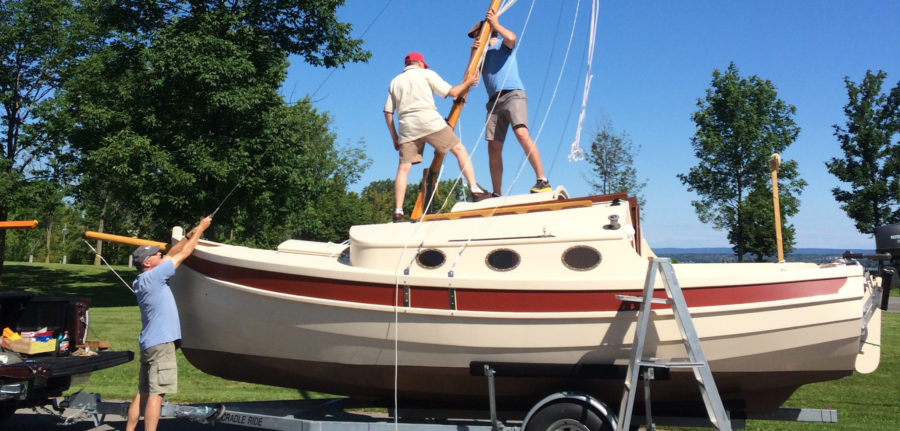
"So, should we be expecting a prolonged period of rain?” asked a neighbor as I clamped the final plank onto the Welsford Penguin taking shape in my garage. The reference…
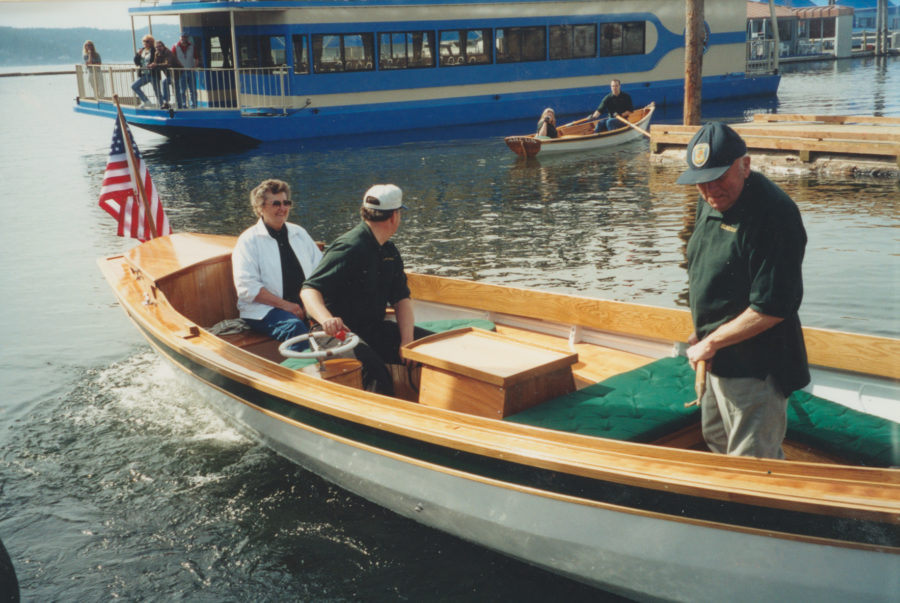
The Power Dory and the Pilot
Art Arpin was a Flying Tiger. He wasn’t one of the original group of American aviators—he joined just after the departure of their commander, Claire Lee Chennault, in 1942—but took…
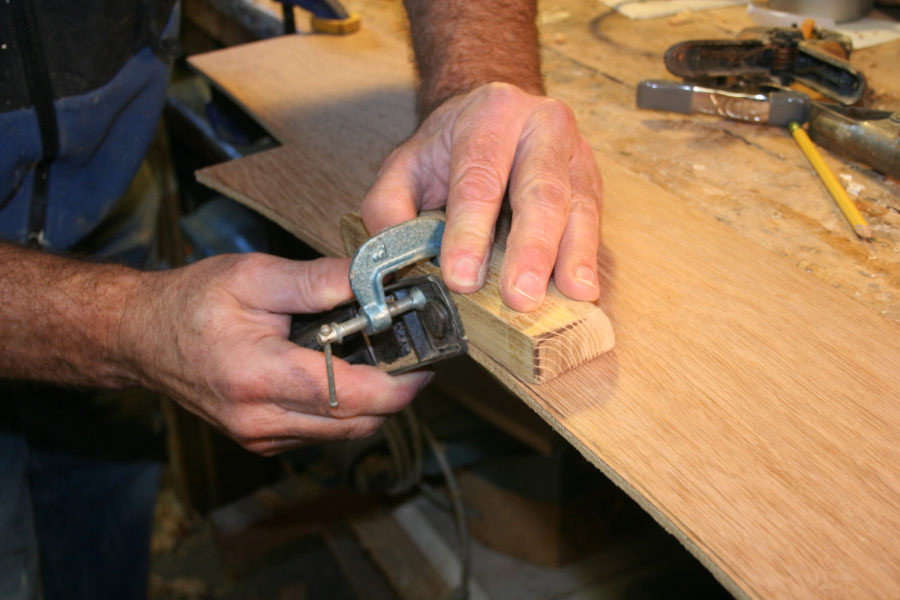
Planing Edges Square
When you give a plane a sharp edge and set it to make a fine cut, it’s easy to come neatly up to the pencil line you’re cutting to. It’s…
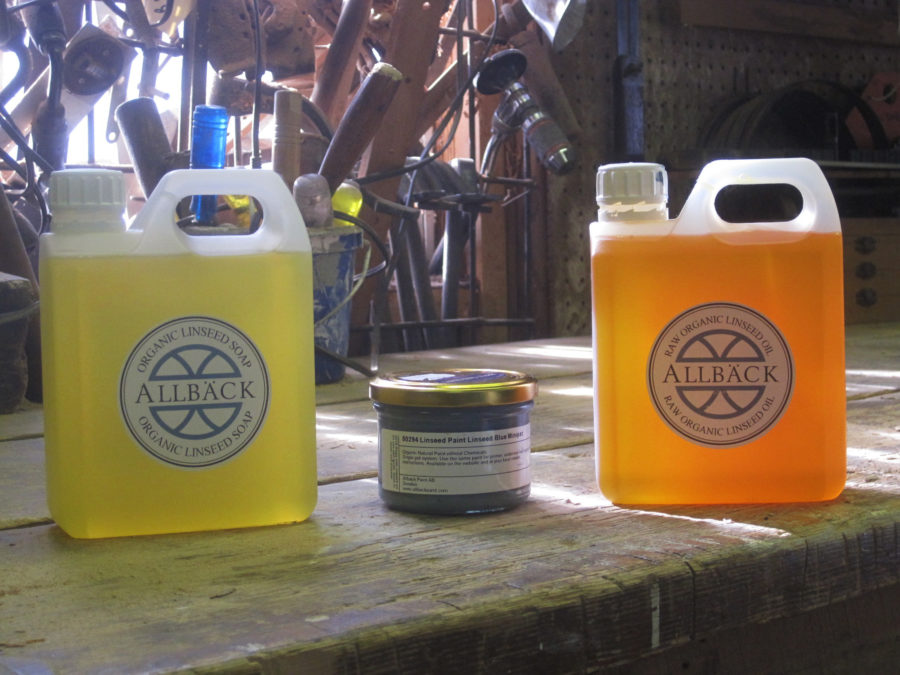
Linseed-oil Paint
It’s widely accepted that organic food is better for us and the environment, so it’s not a great leap to reason that organic paint would be just as good for…
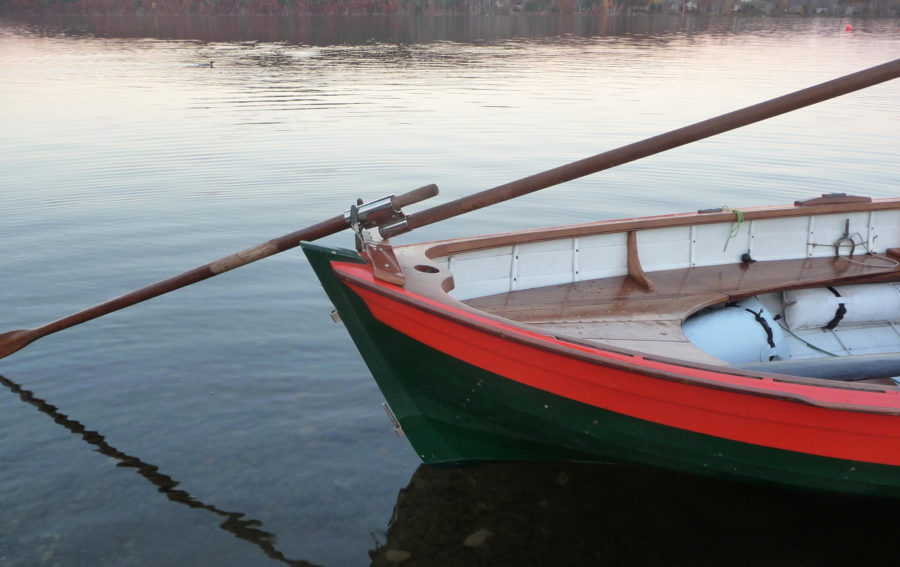
Sometimes, when you want to slide quietly from one fishing spot to the next, work up a narrow guzzle, or maneuver through a tight mooring field, it’s nice to be…
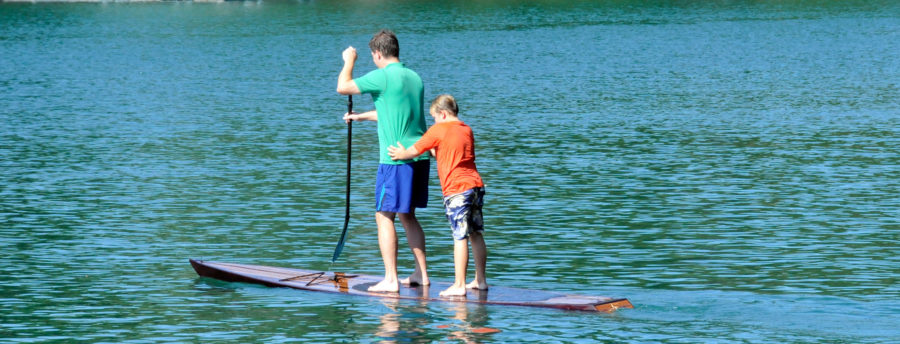
Reader Built Boats
From Aerodynamics to Aesthetics
John “Captain Jack” Hess got an early start with strip-building, but it wasn’t with boats. Around 30 years ago, his sons Chris, Ben, and Jonathan, and his daughter Sara, all…
More Product Reviews
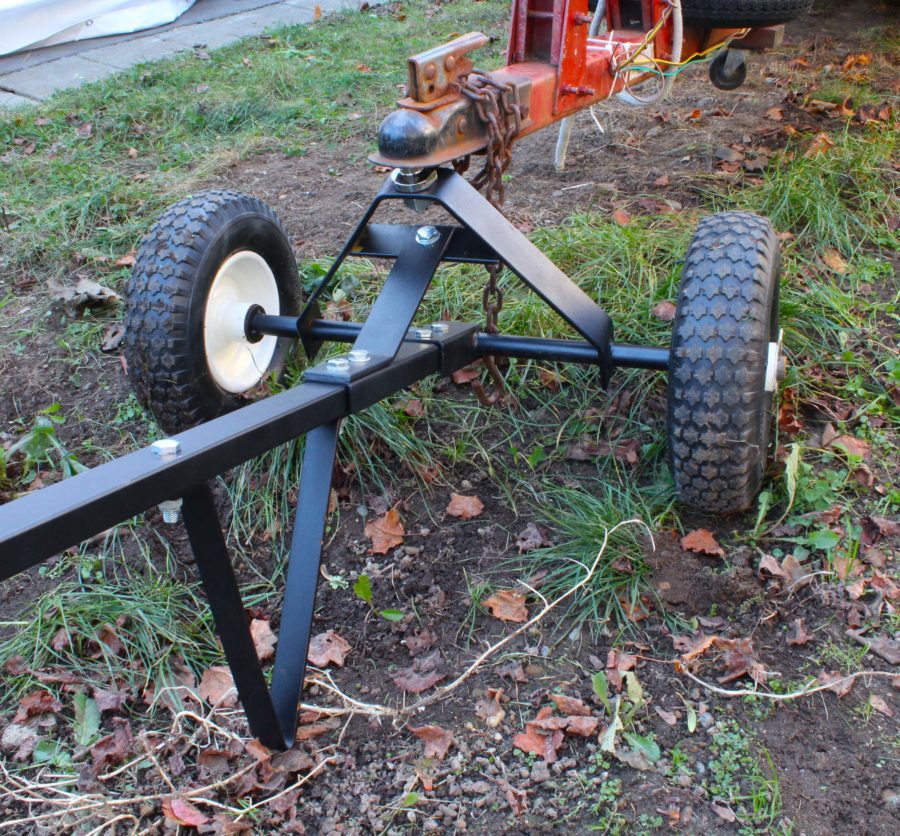
MaxxHaul Trailer Dolly
The first time I used the dolly—on the trailer I don’t have outfitted with a jack—I was impressed with how easily it can lift the trailer’s tongue from the ground.…
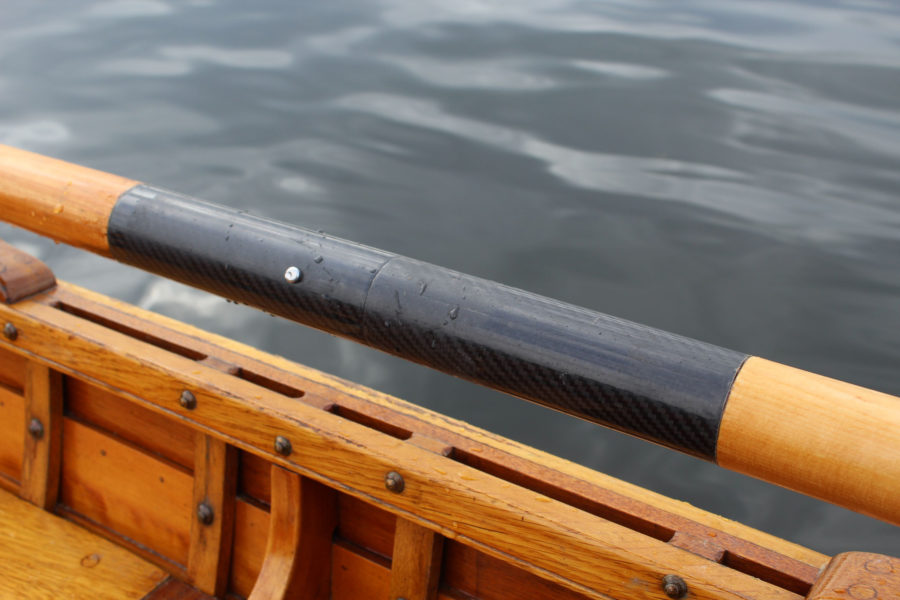
Carbon-Fiber Ferrules for Oars
Most of my boats are outfitted for rowing, and while I always have a pair of oars aboard, they’re often in the way when I’m sailing, motoring, or at anchor.…
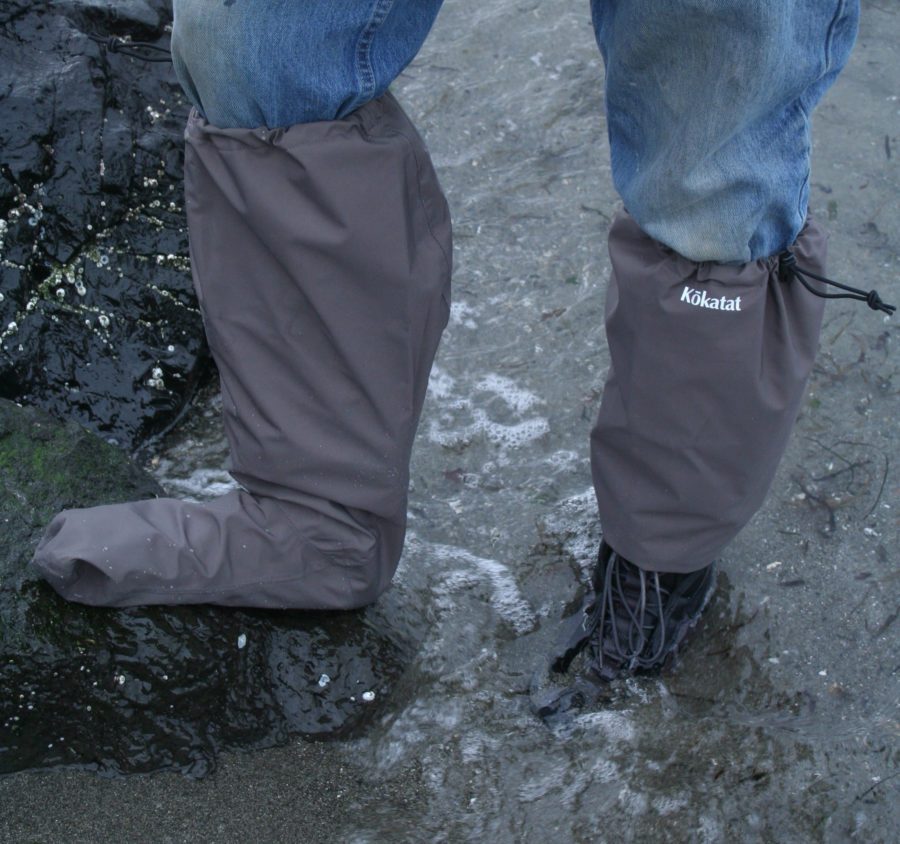
Kokatat’s Launch Socks
I have been a kayak guide for 15 years and have always hated getting my feet wet. My home waters of Puget Sound are a chilly 45 to 50 degrees…
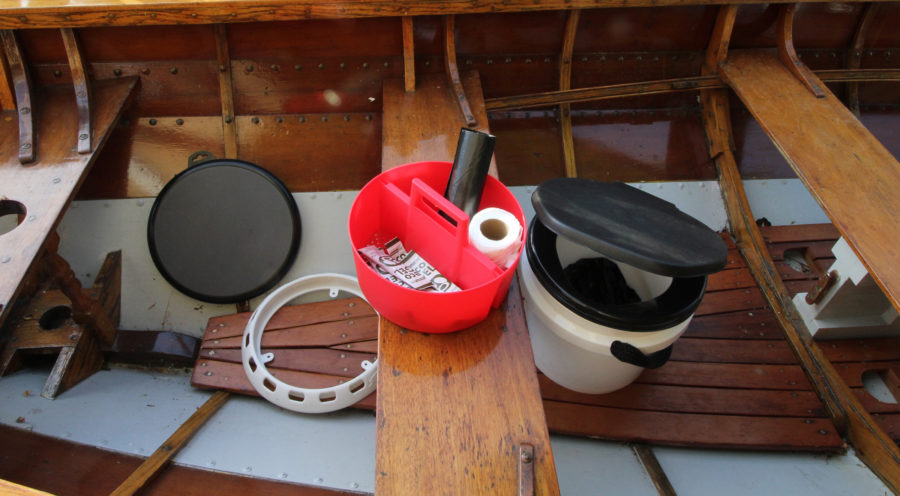
Small Boat Head System
Small boats are still small. Portable flush toilets, like the classic Thetford and Dometic toilets, are too large to fit into most open boats. The folks at Duckworks decided to…
Subscribe Today!
Become a subscriber today and you’ll recieve a new issue every month plus unlimited access to our full archive of backlogged issues.
Already a subscriber? Sign In
Subscribe For Full Access
Flipbooks are available to paid subscribers only. Subscribe now or log in for access.
Shaw and Tenney Home
- Traditional Oars
Sculls, Adirondack, Specialty and Large Oars
- Marine Hardware, Oarlocks, Leathers and Accessories
- Traditional Canoe Paddles
- Kayak Paddles
- SUP Paddles
- Artisan Canoe Paddles
- Paddling Accessories
- Wooden Masts and Spars
- The Shaw & Tenney Whitehall
- Camp and Home
- Pack Baskets and Bags
- Miniature Paddles and Oars
- Custom Engraving
Shopping Cart
Shaw and tenney mobile nav.
- Gear & Apparel
- Awards & Engraving
Header Image

We offer a wide range of oars for a variety of applications, from miniature oars for children's boats to 21' steering oars for whaleboats. You’ll find our oars in gondolas in a Las Vegas casino, on wooden sculls in Norway, and in plays on Broadway. We can make custom oars for virtually any application.
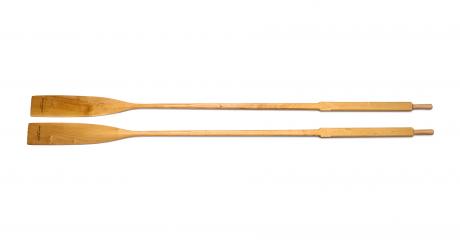
Back to Top
How to Size Your Oars
To determine the correct length oar for your boat measure the distance between the port and starboard oar sockets. Then apply the Shaw and Tenney oar length formula to determine the oar length that will provide the correct 7:18 leverage ratio. This length will provide an oar where 7/25 the length is inboard of the oarlocks and 18/25 of the oar is outboard of the oarlocks. It is the ideal ratio to row almost all boats. Sized correctly, when rowing your hands will be 1 to 3 inches apart and you will be pulling directly towards your abdomen. If you are popping out of your oarlocks when rowing your oars are far too short. If you prefer an overlapping grip, add 6” to the calculated oar length. If you have more than one rowing station in your boat, measure both. Typically they will require two different length oars which is fine if you’re going to be rowing tandem and need two sets. Otherwise you’ll need to compromise the correct length to work properly in both stations. If you are rowing more than 75% in one station size the oar to that length. As always feel free to call us and were happy to help you select the correct oar length and blade style for your boat.
The Original Shaw & Tenney Oar Length Formula
To help our customers size their oars correctly, we’ve been using the same formula since 1858: Measure the distance between the center of the port and starboard oar sockets, which hold the oar locks on each gunnel. This is called the “span” between the oarlocks. Divide the span by 2, and then add 2 to this number. The result is called the “inboard loom length” of the oar. Multiply the loom length by 25, and then divide that number by 7. The result is the proper oar length in inches. Round up or down to the closest 6” increment.
How to Size Your Paddle
For traditional wooden paddles the ideal length for the Stern paddler is the bridge of your nose or 6 inches less than your height. For the bow paddler the paddle reaching the cleft of your chin or 9 inches less than your height is correct.
For our Racine paddle if you are over 5’6” tall select the 63-1/2” length and the shorter paddle if you are under5’-6”tall.
When paddling solo we typically recommend a bow length paddle. For Canadian style solo most paddlers prefer an even shorter paddle.
For paddling canoes when standing (yes our mother let us do this) a 69 inch or 72 inch paddle is usually about right.
Shaw and Tenney
Toll Free: 800-240-4867 207-866-4867 20 Water Street, PO Box 213, Orono, Maine 04473
Shop Shaw & Tenney
More information.
- Privacy Policy
- Terms & Conditions
Stay In Touch with Shaw & Tenney
© 2021 Shaw & Tenney, Inc.
Have a question or need some help?
Call us at 800-240-4867 or click here to send us an email . Thanks!
No products in the cart.
- Shopping Cart
- Dreher Oars
- Carbon Parts
- Services & Telemetry
Sculling Oars
Showing 1–12 of 26 results
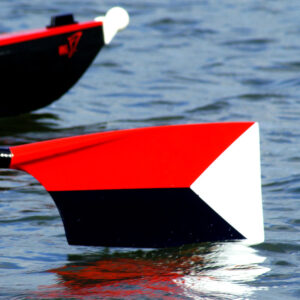
Dreher Standard Competition Sculls
Standard Modulus Adjustable Length Carbon Sculls: Dreher adjustable length carbon sculls offer multiple options including four blade shapes; two levels of shaft stiffness; three handle sizes; a few rigging selections; and several sleeve choices (including the Tool-Free Adjustment option). Apex … Read more
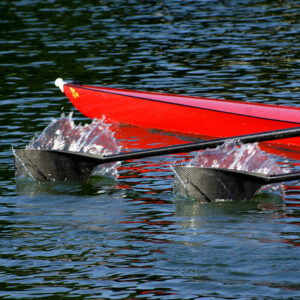
Dreher High Performance Sculls
Dreher High-Performance Adjustable Length Sculls: Built with a combination of high modulus carbon internally and twill carbon on the exterior, these adjustable length sculls are both strong and light. The 100% carbon sculls come with multiple options including three blade … Read more
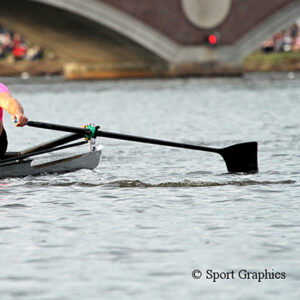
Dreher Alpha Sculls
Alpha Blade Sculls with Tool Free Adjustment: These sculls feature our unique Alpha Blade and are equipped with our revolutionary Tool-Free Adjustment. The Alpha blade has more curve from top to bottom and from tip to tail, with the … Read more
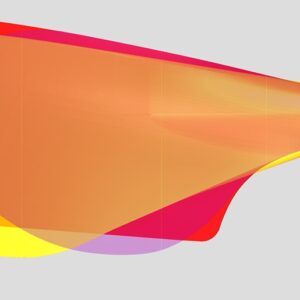
Dreher Elliptical Sculls
For a look at Elliptical Shaft compatible blade shape versus other blades that are made for round shafts that we sell, see the Sculling Oar Blade Geometry Link .
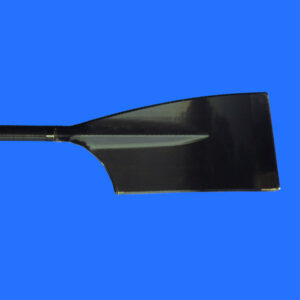
Dreher Touring, Open Water and Junior Sculls
Dreher Adjustable Length Carbon Sculls For Touring, Open-Water and Junior Scullers Dreher adjustable length sculls provide a wide range of blade shapes. Big Blade and Little Big Blade hatchet shapes are ideal for recreational and junior rowers. Apex Round blades are … Read more
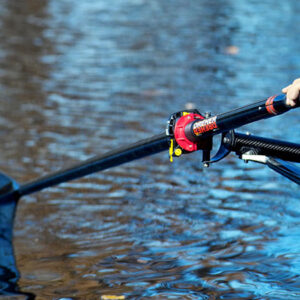
Carbon Recreational Sculls – Fixed Length
Carbon Recreational Sculls – Fixed Length: 100% Carbon Fixed Length (9’6″) Hatchet Sculls. These sculls are the most popular choice for entry level and recreational scullers. Due to shipping restrictions, the sculls come with the handles out and the collars off. … Read more
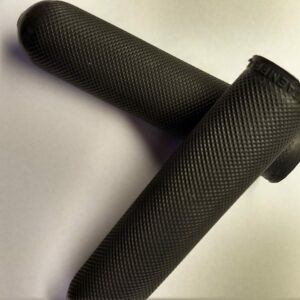
Stämpfli Sculling Grips
Stämpfli Sculling Grips: Stämpfli Grips have been used by scullers worldwide for decades and surely rank as one of the most popular choices for grips. The grips are made of natural rubber and have a knurled diamond cross-hatch pattern resulting … Read more
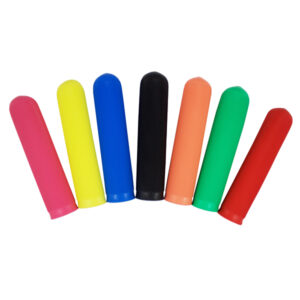
Martinoli Sculling Grips
Martinoli Grips: Martinoli grips are a synthetic rubber with a knurled finish that fit any handle size. Available in six colors: Red, Green, Blue, Yellow, Light Orange, and Black. Price per pair. If you would like to purchase multiple pairs in … Read more
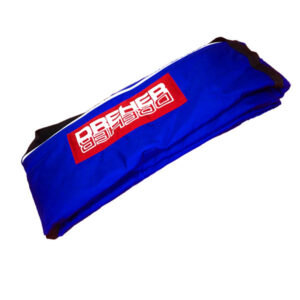
Padded Nylon Scull Bag
Padded Nylon Scull Bag: The Padded Nylon Scull Bag is made by Burnham Boat Covers in New Hampshire. Blue with full length zipper, Dreher logo, quilted lining, shoulder straps, and a divider for the blades. This bag is great for keeping … Read more
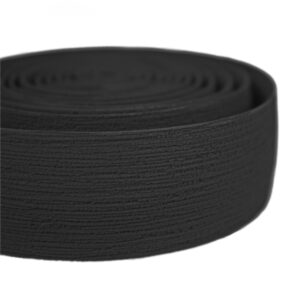
Row-Wik Scull Grip Wrap
Row-Wik Scull Grip Wrap: Row-Wik is easy to wrap, performs well in dry, humid, rainy and cold weather. Most importantly, it is easy on the hands. It has a subtle textured surface that wicks away moisture and provides a good … Read more
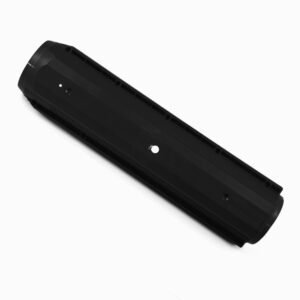
SRS Scull Sleeves
Priced per Pair.
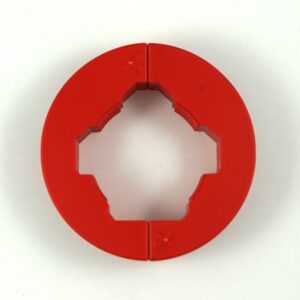
SRS Scull Collars
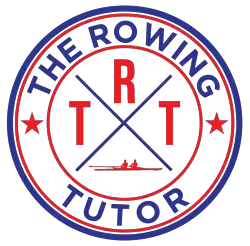
What is Sculling and why do we love it?
So what is sculling? We know rowing is a sport that many people enjoy, but did you know there are different techniques you can use? In this article, we will discuss Sculling. What it is and how do you do it? And who are some famous rowers who were amazing scullers? We’ll answer all of those questions and more! So, if you’re interested in learning more about this particular rowing technique, keep reading!
Table of Contents
What is Sculling
Sculling is a rowing technique that uses oars to propel a boat forward. Unlike traditional rowing, which uses oars that are attached to the boat, sculling uses oars that are held in the hands. This allows for greater control and mobility, making it perfect for small boats. Sculling is also a great workout, as it uses all of the major muscle groups.
In addition, because sculling involves constant movement, it can be an excellent way to improve cardiovascular health. Whether you’re looking for a new challenge or a new way to stay fit, sculling is definitely worth trying.

The History of Sculling
Sculling is a popular rowing technique that has been used for centuries. The first recorded use of sculling dates back to ancient Egypt, where it was used to propel boats along the Nile River. Can you imagine rowing in that heat? Sculling quickly became popular in other parts of the world, and by the Middle Ages, it was being used in Europe to move barges and other large vessels.
In the 18th century, sculling began to be used for recreation and competition, and it remains a popular sport today. Thanks to its simple equipment and easy-to-learn technique, sculling is enjoyed by rowers of all ages and abilities. Whether you’re looking for a relaxing way to enjoy a sunny day or a challenging workout, sculling is an activity that is sure to provide hours of enjoyment.
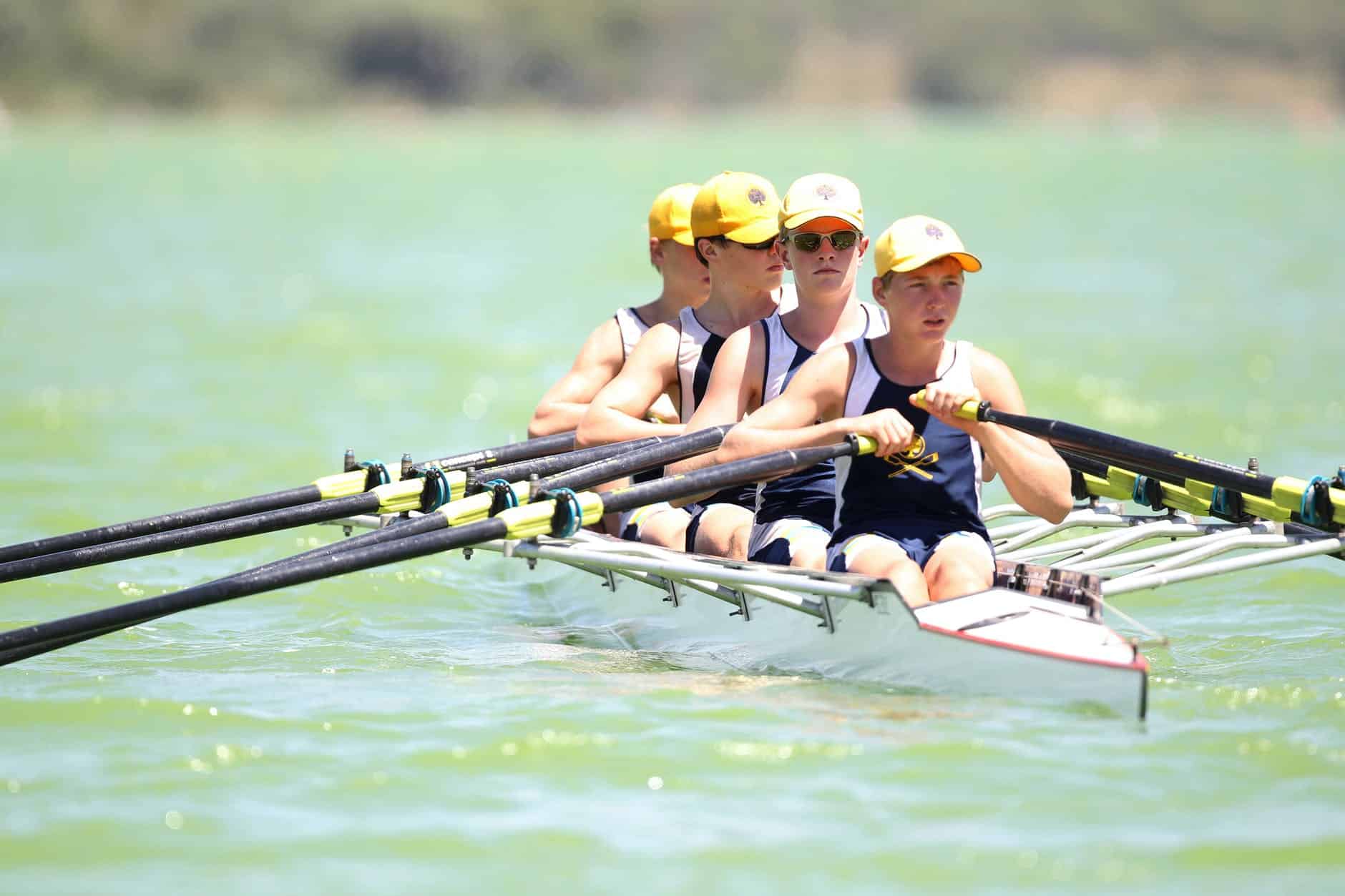
Famous Scullers
There have been many famous scullers throughout history, including Sir Steve Redgrave, who won five Olympic gold medals in sculling between 1984 and 2000. another well-known sculler is Sir Matthew Pinsent , who also won four Olympic gold medals in sculling between 1992 and 2004. More recently, Andrew Triggs Hodge, who rowed for Great Britain at the 2012 Summer Olympics, became the first ever person to win an Olympic gold medal in sculling.
Why We Feel Sore After Rowing: DOMS and How Best to Look After Our Bodies
What is sculling?
Sculling is a rowing technique that uses oars to propel a boat forward. Unlike traditional rowing, which uses oars that are attached to the boat, sculling uses oars that are held in the hands.
How do you do it?
To scull, rowers hold an oar in each hand and use them to propel the boat through the water. Sculling requires constant movement and coordination, making it a great workout for the whole body.
Who are some famous scullers?
Some of the most famous scullers in history include Sir Steve Redgrave, Sir Matthew Pinsent, and Andrew Triggs Hodge.
What are the benefits of sculling?
Sculling is a great workout, as it uses all of the major muscle groups. In addition, because sculling involves constant movement, it can be an excellent way to improve cardiovascular health. Whether you’re looking for a new challenge or a new way to stay fit, sculling is definitely worth trying.
We hope you enjoyed learning about Sculling! This rowing technique is a great way to get a workout and enjoy the outdoors. If you’re interested in giving it a try, be sure to check out our beginner’s guide to sculling. And if you’re already an experienced sculler, we’d love to hear about your experiences in the comments below. Thanks for reading!
Search This Blog
Rowingrelated.
Training. Racing. Analysis.
Introduction

In this guide:
Sculling vs. rowing: what's the difference, benefits of sculling, why learning how to scull can make you a better rower, famous scullers.
Many people confuse sculling with rowing, but they are two distinct disciplines: In rowing (also called 'sweep rowing'), each person uses a single oar to propel the boat forward; in sculling, each person uses two smaller oars — one in each hand — to row the boat. This means that the technique required in sculling is quite different from rowing, but the skills are complementary and the physiology effectively the same.
Still, sculling is the foundational discipline of modern rowing. The competitive sport of rowing has its roots in the Doggett's Coat and Badge — a race that has been run on the Thames River in London, England by the Thames Watermen since 1715.
Sculling has many benefits for both physical and mental health. Here are some of the most notable:
Full-body, balanced workout
Sculling requires the use of almost every muscle in your body, making it an excellent full-body workout. Also, unlike rowing, the sculling stroke is balanced: While rowing necessarily means you'll be pivoting out to one side of the boat or the other following the sweep of the oar, sculling encourages you to keep your bodyweight centered and avoids any overuse or overtraining of one side or the other.
Balance and coordination
Since sculling requires two oars, it also requires a greater degree of balance and coordination than rowing. This can help improve your overall balance and coordination in sweep boats, as well as in other areas of your life.
Low-impact exercise
Sculling, like all forms of rowing, is a low-impact exercise, which means it's easy on your joints and less likely to cause injury.
Improved balance and coordination
Sculling requires a greater degree of balance and coordination than rowing with a single oar. By learning how to scull, you can improve your overall balance and coordination, which can translate to better rowing technique.
Increased power and efficiency
Sculling requires you to use both arms and hands to propel the boat forward, which can help you develop greater power and efficiency in your rowing stroke. If you only row on one side throughout your career, without the balance of sculling (or at least the rowing machine on land), you're more at risk of developing musculoskeletal imbalances.
Greater understanding of the rowing stroke
Sculling requires a different technique than rowing with a single oar, which can help you develop a deeper understanding of the rowing stroke as a whole. Also, training in a single offers a kind of direct feedback you simply cannot get in a shared shell—every movement you make is directly and solely attributable to what you're doing, making it a great (and sometimes harsh) teacher.
Increased versatility
By learning how to scull, you can become a more versatile rower. This can be particularly useful in races where you may have the opportunity to switch between rowing with a single oar and sculling, or switching sides in a rowing boat (imagine if you didn't need to have separate lists of ports and starboards!).
There have been many influential sculling world champions and Olympians throughout history. Here are a few notable names:
Vyacheslav Ivanov
Vyacheslav Ivanov is a former Soviet Union and Russian sculler who won three-straight Olympic gold medals in the single sculls event between 1956 and 1964 (one of only two athletes to achieve that feat). He is widely regarded as one of the greatest scullers of all time.
Pertti Karppinen
Ekaterina Karsten
Ekaterina Karsten is a Belarusian sculler — and seven-time Olympian —who has won four Olympic medals (including two golds) in the women's single sculls event, as well as a bronze medal in the women's quadruple sculls in 1992 at the Games in Barcelona.
She is also a six-time world champion in the women's single, and arguably the best rower in the history of our sport .
Peter-Michael Kolbe
Peter-Michael Kolbe (featured in the 1984 Olympic Final video above racing against Karppinen) is a German sculler who is widely regarded as one of the greatest scullers of all time. He was born on August 2, 1953, in Hamburg, West Germany. In 1973, at the age of 20, he won his first international medal, this time in the double sculls event at the European Rowing Championships in Moscow.
Kolbe was a force in the late 1970s and 1980s, when, winning five world championship titles in the event between 1978 and 1987. He won three Olympic silver medals in the event in 1976, 1984, and 1988.
Olaf Tufte is a Norwegian sculler — and seven-time Olympian — who won four Olympic medals in men's sculling events, including two golds in the men's single in back-to-back Games (Athens, Beijing). The other medals came in the men's double sculls: a silver in Sydney and a bronze at the Rio Games.
Vaclav Chalupa
Vaclav Chalupa is a Czech sculler and six-time Olympian (from 1988 to 2008), who won a silver in the men's single sculls in Barcelona (1992 Olympics), as well as four further silver medals and three bronze medals at Worlds in the men's single.
He also won two medals at in sweep events: a silver in the men's pair with coxswain at Worlds in 2009, and gold in the men's eight in 2007 at the European Rowing Championships.
Kim Brennan (née Crow)
As we wrote in our RR picks for the top 10 athletes of the last decade: "Kim Brennan is one of the most impressive athletes ever in rowing—despite having a relatively short career in the sport, she belongs in the echelon of champions like Ekaterina Karsten and Elisabeta Lipă. Why’s that? In an era when no one (not even the Kiwi Pair) doubles up at the Olympic Games anymore, Brennan not only competed in two events in London 2012, but also won a medal in both the single and the double."
And, of course, she led the way throughout the journey to the Rio Games, winning two of three world titles en route to Olympic Gold in 2016.
Mahé Drysdale
Again, as we wrote in our rundown of the top 10 athletes of the 2010s, "Uncommon as it may be, 'Mahé' is a household name in rowing. And for good reason."
Mahé Drysdale was born on November 19, 1978, in Melbourne, Australia, but grew up in New Zealand and began rowing at the age of 18 while studying at the University of Auckland. Drysdale won his first world championship medal in the men's single sculls event in 2005. He went on to win five more world championship medals in the event in 2006, 2007, 2009, 2011, and 2013.
Drysdale is also a triple Olympic medalist, including back-to-back gold medals in London and Rio—the latter featuring one of the closest races ever in the final (see video above).
Gevvie Stone
Gevvie (Genevra) Stone is an American Olympic sculler who has had a successful and inspiring career in the sport of rowing. She was born on July 11, 1985, in Newton, Massachusetts, and began rowing at the age of 16.
- Related: Podcast Interview: 2012 Olympian Gevvie Stone on racing (and winning) at Silver Skiff
Stone's international career reached its peak at the 2016 Rio Olympics, where she won a silver medal in the women's single sculls event. She narrowly missed out on the gold medal, finishing just 0.54 seconds behind the winner, Kim Brennan.
The Sinkovic Brothers
The Sinkovic Brothers of Croatia are without doubt some of the best scullers in international rowing history. In addition to their medal tally from the World and European Rowing Championships, their Olympic appearances have been nothing short remarkable — after winning gold in the double sculls at the 2016 Rio Olympics, they switched disciplines to the coxless pair in 2020 — and won gold again — becoming the first Croatian rowers to win back-to-back Olympic gold medals.
- Related: Video Of The Week: Smooth Sculling with the Sinkovic Brothers
What makes the Sinkovic brothers remarkable is their versatility in the sport of rowing. They have competed and won medals in both the men's pair and men's double sculls events, which require different technical skills and physical attributes.
These athletes have not only achieved great success in sculling — they have also helped to advance the sport and inspire future generations of scullers.
Popular posts from this blog
The 30 best rowing coaches of all time, part 3: the top 10.

"I Row Crew" — Rowing in 'The Social Network'
RR Interview: Nick Trojan's New Feature on Yale Men's Rowing
Video Of The Week: Holland Beker 2013
Best rowing drills: 5 favorites of olympic champion esther lofgren.
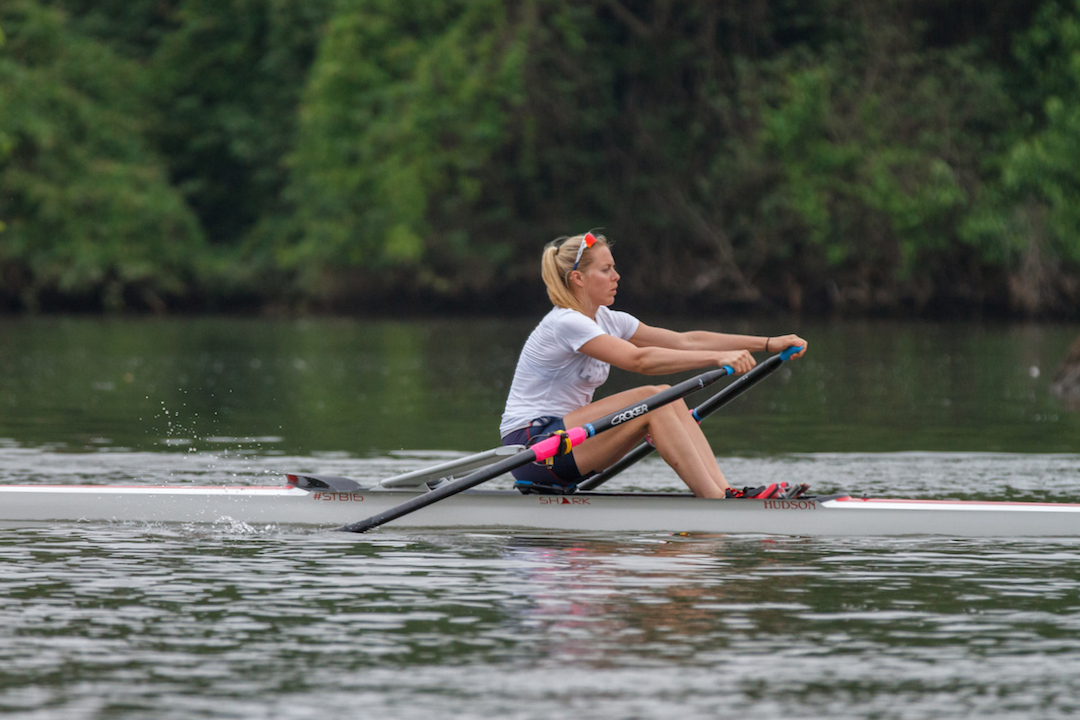

Proven performance. Unparalleled value.
- Recreational
Taking cues from our line-up of boats, WinTech is proud to offer a full range of oars and sculls with models featuring technological advancements for elite-level rowers and durable, price-conscious options for training and recreational users.
- Intermediate competitive
- Advanced competitive

RDS (Reduced Diameter Shaft)
Who should buy it and why it's great..
Our RDS (Reduced Diameter Shaft) oars designed for those looking for high performance skinny oars perfect for those marginal gains!
They offer exceptionally low drag from their aerodynamically engineered, ultra-slender shaft design. The lowest profile oars on the market.

The C90 is a standard shaft oar made from a blend of carbon and fiberglass that balances performance with durability and price. Great for race day and strong enough to withstand the daily grind for years to come.
Perfect for competitive athletes and clubs.

Based on our C90 standard shaft design, the C40 oars are ideal for club use and touring where toughness and price-point are priority over stiffness and weight.

Based on our C90 standard shaft design, the F100 oars are an all fibreglass construction ideal for club use, learn to row programmes and touring where toughness and price-point are priority over stiffness and weight.
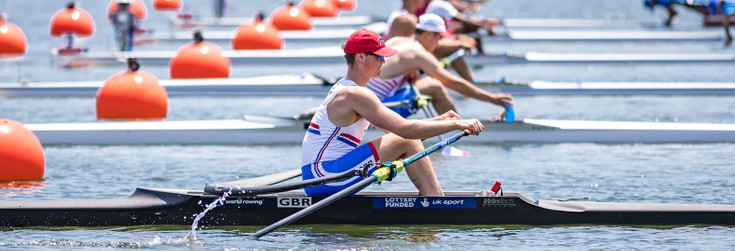
Proof is in the performance
Building a great boat comes down to three core fundamentals: Time-honoured design, premium materials, and construction standardisation.
Value redefined
Our value goes beyond that of just a great product for a great price.
Your complete rowing resource
We’ll happily come to you if you’d like to try a boat, provide you with flexible finance and rental options, and comprehensive aftercare and maintenance services to maximise the efficiency and performance of your boats for now and for the future.

- Bumblebee Sailboat
- Expedition Rowboat
- Cambridge Racer
- Sailing RowCruiser
- Oxford Wherry
- Wheelbarrow Dinghy
- Builders' Forum
- Builder's Resources
- Videos & Photos
- Build Articles
- Featured Adventures
- Testimonials
- Kids Program
- Boat Accessories
- Books and DVDs
- Your Cart is Empty
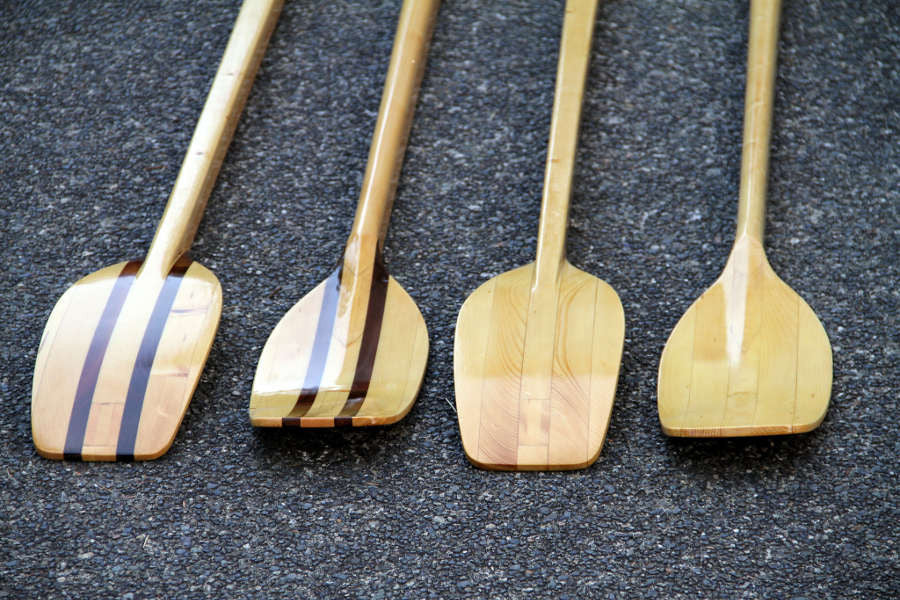
Hollow-Shaft Wooden Sculling Oar Kit
Notify me when this product is available:
If you’ve spent months building a gorgeous wooden rowing vessel, a pair of gleaming varnished sculling oars are the icing on the cake. The shaft is constructed to the same specs that have been developed by top engineers, and tried and tested for decades in the competitive racing world. We have tweaked the blade shape and design to simplify construction and spent months dissecting the build process to create a simple step-by-step method that can be accomplished by first time oar builders.
Click here to learn more about Hollow-Shaft Wooden Sculling Oars.
Kit Contents
Oar kits include template pieces cut with CNC accuracy, 2.5 oz and 6 oz fiberglass, oar buttons, wood flour and other materials required for the build. You will need to supply the wood and epoxy for construction of the oars.
The template allows you to easily transcribe the blade shape onto the wood. Our full-sized plans are printed on a 10’ x 3’ sheet and are accompanied by a 27-page illustrated manual. Note, the cnc plywood templates are not used as a structural material, but simply an easy and precise way to transcribe the cut shapes onto your wood.
List of Included Items
- Detailed Manual ( See Sample Chapter )
- Full-Sized Plans ( See Plans Page )
- CNC Cut Plywood Templates
- Swath of 2.5 oz Fiberglass
- Swath of 6 oz Fiberglass
- 2 Oar Buttons
Related Items

Angus Pram Complete Kit
The Angus Pram combines functionality with good looks. It has been carefully designed to also provide optimal performance and functionality on the water. It can be... View full product details
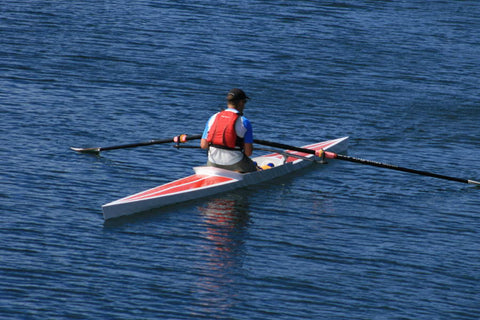
Cambridge Racer Kit
The Cambridge Racer is a performance rowing shell designed specifically for speed. It is fastest in calm conditions, however, is shaped to perform well in... View full product details
Expedition Rowboat Kit
This expedition-designed rowing scull is seaworthy, fast and can carry a month’s provisions. The watertight storage space is accessed through extra-large hatches and the roomy... View full product details
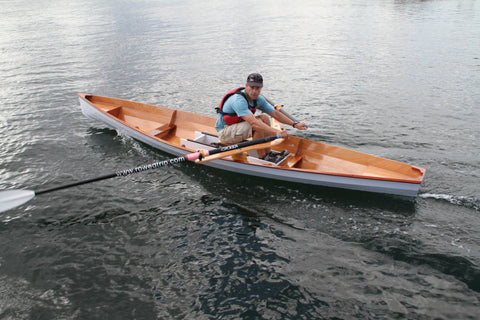
Oxford Wherry Kit
The Oxford Wherry combines elements of traditional beauty with modern design and construction to create a vessel that is not just gorgeous, but surprisingly functional. Its design... View full product details
frequently bought with these items
- Support Forum
- Do not sell my personal information
Sign up to get the latest on sales, new releases and more …
© 2024 Angus Rowboats .

'The Boys in the Boat' Book to Movie Comparison
Editor's Note: The following contains spoilers for The Boys in the Boat.
- The film adaptation of The Boys in the Boat cuts out the entire first part of the book, including important background information.
- The focus of the film is more on coach Al Ulbrickson rather than Joe Rantz, the central character in the book.
- The film is a sports drama and sacrifices historical context for a more concise and dramatic story.
Daniel James Brown ’s The Boys in the Boat is a 2013 book that tells the story of the University of Washington’s Husky Clipper crew that overcame all of the odds to make it to the 1936 Olympic Games in Berlin. It’s a riveting read that explores the struggles of the Depression Era and the perseverance of the human spirit. If you’re anything like me, these kinds of true underdog stories always manage to resonate, even if you’ve never picked up a rowing oar in your life. These kinds of stories always seem to translate well to the big screen, as we all love to see people overcome, so it is no surprise that Brown’s novel made it to the silver screen in the final days of 2023.
As with all books adapted to the screen, though, changes were made to make the film more exciting and make sure it didn’t have a runtime of ten-plus hours. Whether you’ve read the book and have yet to see the film or vice versa, you’re probably wondering just how much has changed in this exciting tale of triumph. It’s more than you think.
The Boys in the Boat
A 1930s-set story centered on the University of Washington's rowing team, from their Depression-era beginnings to winning gold at the 1936 Berlin Olympics.
Release Date 2023-12-25
Director George Clooney
Cast Peter Guinness, Joel Edgerton, Callum Turner, Sam Strike
Rating PG-13
Runtime 124 minutes
Main Genre Drama
The Film Cuts Almost the Entire First Part of the Book Out
Brown’s book is divided neatly into four parts, the first of which covers the time before the creation of the team in 1993. This part delves into the early life of Joe Rantz (portrayed in the film by Callum Turner ) in great detail, outlining the way his family moved around and how misfortune struck with the beginning of the Depression, as well as his strained relationship with his father’s second wife, Thula LaFollette . This section also explores the background of coaches Al Ulbrickson and Tom Bolles, and boatmaker George Pocock, and their role in building the rowing program at the University of Washington.
This part also neatly juxtaposes the trial and choosing of the rowing team with the building of the Olympic field in Germany, a comparison not made in the film. Because most of this part of the book is background information on the key players that happened well before the formation of the Husky Clipper crew , it was most likely left out for time’s sake. However, that means that a key point in Rantz’s life — being abandoned by his father at fifteen and having to learn self-reliance , and his difficulty trusting others because of it — is not fully explored, and certain dramatic moments in the film suffer because of it.
George Clooney Says His Next Team-Up With Brad Pitt Is "Dark" and "Out There"
Al ulbrickson, not joe rantz, is the focus of the film.
The Boys in the Boat , as a film, places a little more focus on coach Al Ulbrickson ( Joel Edgerton ) than the book does. Rantz still plays a significant role, of course, but Ulbrickson’s struggle to choose the team members, anxiety over if they’re ready to race or not, and struggle to fund their Olympic dream often take center stage. However, the book focused on Rantz, who had overcome significant struggles to make the team and dealt with a great deal of harassment due to his financial situation .
The Film Is a Sports Drama, Not a Historical One
Ulbrickson makes a better central character for the film, mostly because the film is not a historical account like the book is — it’s a sports drama . A great deal of the historical context given by Brown is condensed or cut out to keep the film from running too long or muddling the core of the story, which is the races leading up to the Olympics and the Olympic race itself . This is why most of the hardships are seen on the water — the team struggling to work together, the trials and tribulations of the boys hoping to make the team, Ulbrickson’s curt pep talks — and the races receive the most interesting cinematography. It even dramatized the 1936 Olympic finish to create a more dramatic story; the race didn’t actually end in a photo finish. The teams had to wait in the boat as the judges deliberated until it was finally announced that the American team had won, their boat touching the line just six-tenths of a second before the Italian one.
It’s also why Rantz’s romance with Joyce Simdars ( Hadley Robinson ) is given more focus. Their relationship is also changed from the book; Rantz had actually proposed to Simdars in April 1932 . They didn’t reunite in college, though it does make for a more exciting story for moviegoers as it gives Rantz a good send off to the Olympic Games.
The Movie Leaves Out the Race To Meet FDR
The Poughkeepsie race was a big one in the film, as the University of Washington hadn’t won the race in some time. While the race itself was tense and the Husky Clipper crew came out victorious, the film didn’t include the fact that before the race, they rowed up the river to Hyde Park , where President Franklin D. Roosevelt’s estate was located. They found it and knocked on the door, only to find out that Roosevelt wasn’t home. Roosevelt’s son invited the team in, though, and they had a good talk about rowing.
No, The Berkeley Coach Didn’t Give the University of Washington Team $300
Speaking of a more exciting story, the film has a scene where the coach of the University of Berkeley team comes to Ulbrickson and asks how short he is on funds to get the team to Berlin. Ulbrickson says they’re short $300 - give or take - and the Berkeley coach writes the check then and there for him, saying his boys deserve to go. It’s one of those scenes that just make you feel good and believe in the spirit of friendly competition… except for the fact that it never happened . The team actually raised all the money they needed through fundraising and corporate donations from the businesses of Washington. This addition was meant to still up a little more drama, but the original story was just fine , in my humble opinion. After all, most people didn’t have money to spare at the time; banding together with a quarter here and a dollar there to make a team of blue-collar boys’ dream come true really captures the spirit that Brown talks about so passionately.
The Boys in the Boat is now in theaters.
Buy Tickets
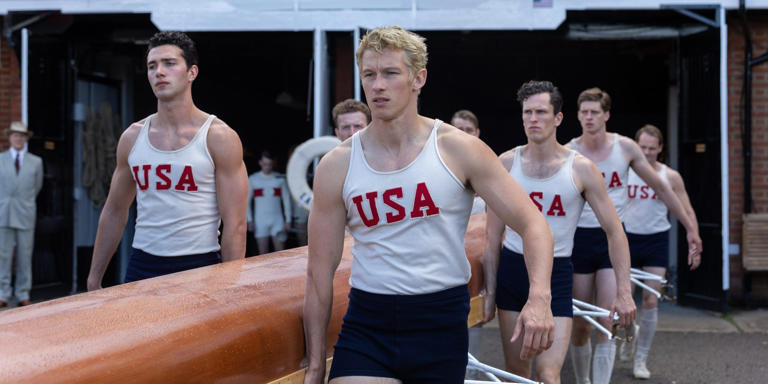

IMAGES
COMMENTS
Smaller boats are allot of fun to scull too. We offer our unique Shaw & Tenney 7'-10" sculling oar which is ideal for most dinghies and smaller boats. Originally designed for the Seacoast Gunning Float and duck hunting, it has an offset, curvilinear blade. Made from a solid piece of native Maine 8/4 ash, it has a superb flex too.
Several of you requested more details on the sculling oar I use. In this vid I talk about the size and construction of the oar, where I stow it at sea, and ...
* (Re-upload, improved version with external shots and more - apologies for commenters on previous upload) *How to propel a boat, with only one oar. This vi...
Scull your small craft with one oar off the transom. Our unique offset curved blade, combined with incredibly flexible native Maine ash, makes sculling a joy. Standard length is 7'10" and suitable for most rowing boats. We also make sculling oars up to 21 feet to propel large craft. One customer circumnavigated the globe and their only auxiliary power was a 17-foot Shaw and Tenney sculling ...
A History of Design. Durham Boat Company started manufacturing Sculling oars in 1988 and by 1989 the first sets were used at the World Rowing Championship. Dreher invented the adjustable handle feature in 1991 and now have the Tool-Free Adjustable Feature available on all adjustable Sculls and now on our newest Sweep Oar, the Dreher Slim Ellipse.
Engineered To Perform. Dreher 100% carbon sculling oars are designed for optimum performance. Our oars are lightweight, rigid, and built to last. Dreher is the only oar manufacturer in the World that autoclaves their shafts and bilaterally compression molds the blades so that the blades come out of the mold with a Class A finish, not requiring ...
My experience using a single sculling oar dates back to about 1973-75 when I taught Rowing Merit Badge at a BSA camp in northern Wis. However that was on a 16 foot rowboat. You will want the oar lock mounted off center but on a rowboat that was primarily for balance, on our boat probably enough to clear the rudder and tiller is fine.
A Simplified and Sculling Oar. by Hans van der Zijpp - Netherlands. For my little trimaran I use a very clever sculling method, invented by Atsushi Doi. You can see all his information by googling/youtubing AD sculling. This year I participated in the Dorestad Raid, a sail and oar event in the Netherlands. I noticed I could keep up with most of ...
The Scullmatix provides benefits even for skilled scullers: It doesn't strain your wrist, it allows you to stand in the best spot to trim the boat, and it converts one of your boat's oars into a long, take-apart sculling oar. Ben Fuller. The Scullmatix is made of 1/8" stainless steel plate and secured withe a pair of stainless 5/16" bolts ...
Adirondack Guide Boat Oars. The finest oars you will find for your guideboat. from. $535.00. S&T Sculling Oar. Scull your small craft with one oar off the transom. from. $377.00. Specialty & Large Oars.
One problem people run into when working out a sculling oar arrangement for their boat is that the size of the oar required for the job is far larger than anything you will typically find on the shelves of most chandleries. My 31-foot cutter, for example, requires an oar of around 14 feet in length. But with suitable lumber, a saw, wood chisel ...
Chinese sampan propelled by yáolǔ via single-oar sculling.. Stern sculling is the use of a single oar over the stern of a boat to propel it with side-to-side motions that create forward lift in the water. The strict terminology of propulsion by oar is complex and contradictory, and varies by context. Stern sculling may also simply be referred to as "sculling", most commonly so in a maritime ...
Oar Specs. Generally sculling oars are 9' 6" in length, and construction is as light as possible. Carbon fiber oars weigh about 3.5 lbs each while fiberglass and hollow shaft wood are about 4-5 lbs. There are two main blade shapes - Macon and Hatchet (also known as cleaver). Macons are the traditional tulip-like shape and the oars are ...
Dreher Touring, Open Water and Junior Sculls. $ 659.00 - $ 779.00. Select options.
These lightweight carbon-fiber oars are strong, lightweight and feel just like normal sculling oars. While the price of our oars is about the same as equivalent one-piece carbon sculling oars, shipping costs are significantly less. Most retailers charge $150-$200 to ship sculling oars to customers in North America due to oversize shipping ...
They sail boats of all types (from a J30 to a Atkin double ender) sans engine and use sweeps and sculling oars for propulsion when there is no wind. The guy who started the group, Jerome Fitzgerald, wrote a great book called "The Purpose of Sailing" in which he details just how efficiently one can handle a boat with no engine.
Sculling is the use of oars to propel a boat by moving them through the water on both sides of the craft, or moving one oar over the stern. A long, narrow boat with sliding seats, rigged with two oars per rower may be referred to as a scull, its oars may be referred to as sculls and a person rowing it referred to as sculler. [1] Sculling is ...
The most common type of sculling boat is the single scull, which is rowed by one person. There are also double sculls, which are rowed by two people, and quad sculls, which are rowed by four people. In addition, there are sweep boats, which have only one oar per person. These boats are typically rowed by four or eight people.
What is Sculling. Sculling is a rowing technique that uses oars to propel a boat forward. Unlike traditional rowing, which uses oars that are attached to the boat, sculling uses oars that are held in the hands. This allows for greater control and mobility, making it perfect for small boats. Sculling is also a great workout, as it uses all of ...
Racing. Coastal. Adaptive. Oars. Recreational. Launches. Racks. Taking cues from our line-up of boats, WinTech is proud to offer a full range of oars and sculls with models featuring technological advancements for elite-level rowers and durable, price-conscious options for training and recreational users. Level:
It requires a special technique that differs from rowing with a single oar. Typically, sculling is done in small boats, such as single sculls or double sculls, but can also be done in larger boats, such as quadruple sculls or even octuples, as is common for young rowers just learning the sport in the United Kingdom.
Racing. Coastal. Adaptive. Oars. Recreational. Launches. Racks. Taking cues from our line-up of boats, WinTech is proud to offer a full range of oars and sculls with models featuring technological advancements for elite-level rowers and durable, price-conscious options for training and recreational users. Level:
Oar kits include template pieces cut with CNC accuracy, 2.5 oz and 6 oz fiberglass, oar buttons, wood flour and other materials required for the build. You will need to supply the wood and epoxy for construction of the oars. The template allows you to easily transcribe the blade shape onto the wood. Our full-sized plans are printed on a 10' x ...
Daniel James Brown's The Boys in the Boat is a 2013 book that tells the story of the University of Washington's Husky Clipper crew that overcame all of the odds to make it to the 1936 Olympic ...